
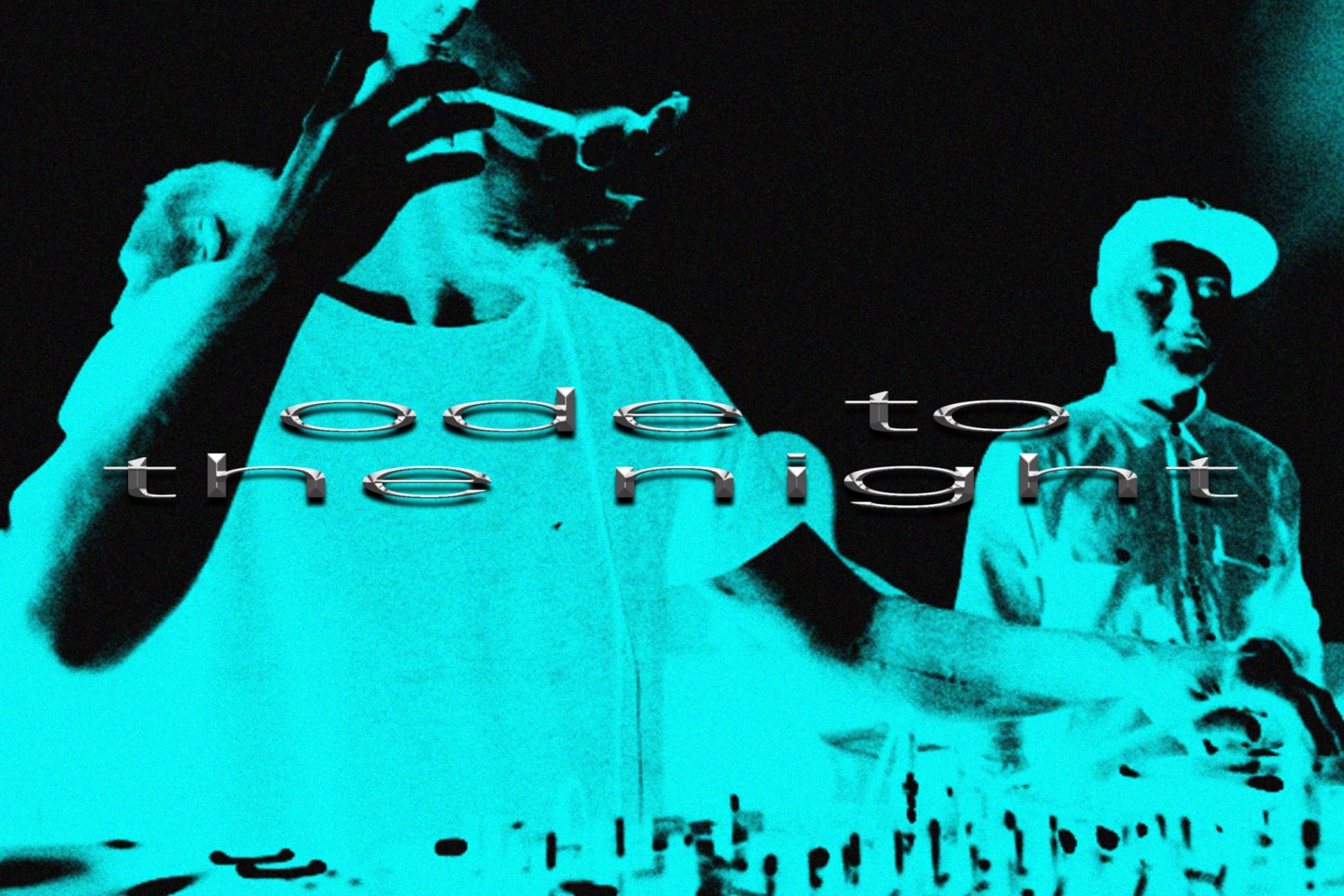
Michail Stangl’s 1015 BPM Pool Party
The CTM Festival curator and former Boiler Room host gives a rollicking account of the first rave thrown at now-defunct Berlin venue Stattbad, where thousands of people converged in a basement swimming pool to see, of all people, Moby.
Introduction
Everyone has their moment, their day, their year. That time in their life where everything seamlessly falls into place, when the stars align, and not only does it feel good, it feels exactly the way it was always meant to be. And sometimes the soundtrack is damn fucking perfect as well.
Songs are written about such moments. Not to say that this story is one of them, but it’s one of those anecdotes you’re compelled to tell whenever there’s a chance to speak about “that one time”—the kind of story that, despite a large cast of its characters having slowly faded out from the storyteller’s life, and some of the finer details having inevitably fallen between the synaptic cracks of memory—still feels as exhilarating as it felt when it happened.
A short disclaimer though: This isn’t completely my own story. It’s a story about the incredible things that were once possible in this city that we all love so much, achieved by incredible people who, against all odds or better judgement, decided to pour their heart-blood into something most people would consider odd, an impractical hobby, or simply a nuisance (especially if they happen to be the neighbors.) It’s a story of a Berlin that doesn’t really exist anymore, of spaces that weren’t really meant to be and are impossible now… It takes place in a Berlin which I only experienced the tail end of, one that was just coming out of the confusion and the possibilities of post-reunification Germany.
Tl;dr: It’s a story in which I organized a pretty damn good party that helped kickstart one of the most iconic music platforms of the last decade, and as strange as it sounds, I have Moby to thank for it. It all happened in the late spring of 2011, May 20th to be precise.
-
The 1015 BPM Pool Party read by Michail Stangl

The 1015 BPM Pool Party
I came to Berlin in March of 2005 in a beaten up Mazda, a few days short of my 22nd birthday—with no plan, no money, and no real idea what I wanted from life, except for what I had seen on a poster on the internet a few months prior, advertising a breakcore party called Wasted. Funnily enough, this event was organized by club transmediale, now CTM Festival, which I co-curate. In case you don’t know what breakcore is: Imagine Aphex Twin, but on rancid LSD, with gabber kick drums and a rhythm that sounds like a drum machine spat out by a black hole. It’s awesome.
Exciting things happened in those first years, but since a majority of them were spent on me slowly turning from a small town kid with a chinstrap and an awful haircut into an OK-ish DJ and event organizer, I’ll skip that part. All you need to know is that I worked my way up from occasionally working the door at a long forgotten avant-garde music venue called Zentrale Randlage in Prenzlauer Berg (they had concerts where people played folk music in the nude, a soundsystem that would overheat and drop out if people raved too hard, and a dog that would always sleep in the corner of the club on a sofa, no matter how loud the music got) to plugging off-kilter bangers from behind the counter of Dense Records, Berlin’s best record store at that time, to organizing parties (co-financed by the generosity of Germany’s student loan system). These parties were all focused on one thing: A kind of naive and forward-thinking eclecticism, experimenting with various trajectories of the hardcore continuum and derivates of soundsystem culture, all driven by the promises of social utopias inherent to club culture. The stories of other important spaces, which all deserve their own histories, are folded into that as well: Maria am Ostbahnhof, WMF, Raum18, Chez Jacki, and other spaces that never had names or permits.
Back then, I was living in Wedding near Seestraße, which has now been my neighborhood for over 15 years. I ended up there not only because it was the cheapest of all boroughs close to the city center (after all, it’s technically still Mitte) but also because Kreuzberg was already pretty expensive and resonating with the gentrified hipness that increased rents by the minute. There was one room I could have been able to afford off Glogauer Str., but it was in a flat that I would have had to share with someone who owned not much more than a mattress under a Nietzsche quote crudely painted in black on the naked wall in his room. Friedrichshain literally had one supermarket, and the part on Frankfurter Allee between Samariterstraße and the S-Bahn was a no-go area at night because of a club called Jeton, a popular drinking hole for hooligans, nationalists, and the far-right. The rest of the city west of that was just… weird. So Wedding it was.
... the part on Frankfurter Allee between Samariterstraße and the S-Bahn was a no-go area at night because of a club called Jeton, a popular drinking hole for hooligans, nationalists, and the far-right.
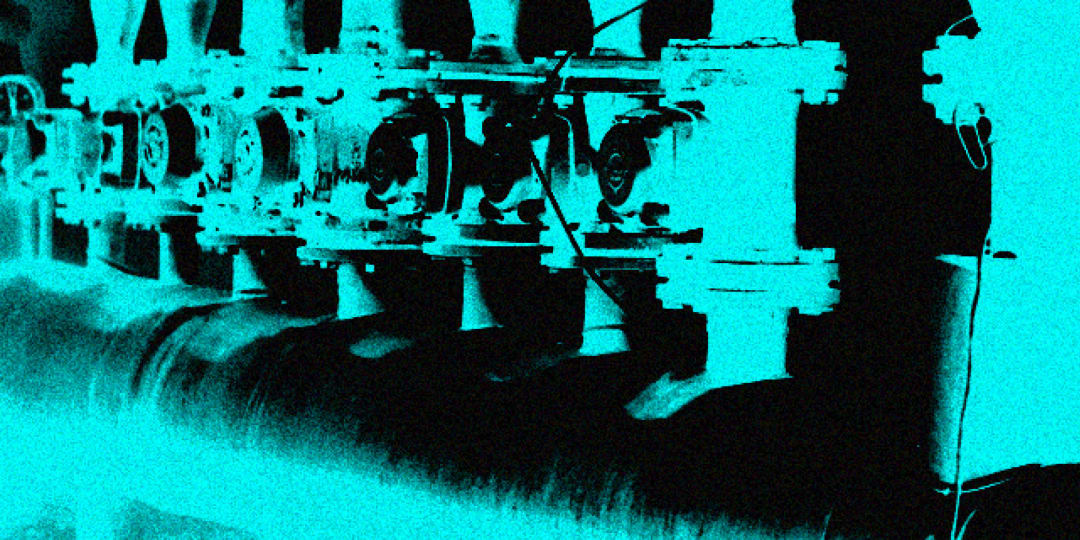
There wasn’t much happening in Wedding at the time. None of my friends lived there, nor were there any venues worth mentioning, until one day in late 2010 when a friend told me about an abandoned swimming pool near the Wedding S-Bahn station that had been turned into an art space and was being used to occasionally organize parties as well. The venue was called Stattbad, and it was absolutely incredible: two large and empty swimming pools, connected by corridors of tiled showers, dressing rooms, and abandoned saunas, and more space than anyone had ever seen before, repurposed to host all sorts of fringe visual art and music. Rumor had it that Peaches even had her studio in the building. After visiting it a few times myself, I arranged a meeting with the owner, a man called Jochen Küpper, a street art activist who teamed up for this venture with Daniel Plasch, who himself had been part of the team behind a legendary, recently-closed club called Villa, a semi-legal venue near Landsberger Allee known for notoriously hedonistic parties during the stroboscope-filled and neon-colored heyday of a genre called electroclash. During that visit, they showed me what they considered the real future of the space: the basement. Accessible only through a steep staircase behind an inconspicuous door, it was a claustrophobic labyrinth of pipes, valves, sharp corners, and tight tunnels centered around a cavern-like room containing three large 50,000 liter water boilers that were originally used to head the swimming pool’s water—meaning it was absolutely perfect for a rave. They had loose plans to open it up for regular events, but nothing final had been decided yet. I told them I would be in touch.
A few days after that meeting, my telephone rang. It was Moby’s management.
This element will show content from various video platforms.
If you load this Content, you accept cookies from external Media.
At the time, I was still doing my master’s at the UdK (the Universität der Künste Berlin), with no real plans after that, but I had already become part of a crew called Leisure System, helping kickstart the label and co-running their quarterly Berghain nights. A few months prior, while running another monthly party at Chez Jacki with my friend DJ Marius Reisser, I launched a party called Bodywerk at Horst Krzbrg (infamous for one of the best sound-systems in Berlin, home base of the Wax Treatment parties and a venture of Mathias “Johnnie” Stieler, the legendary co-founder of the first Tresor club, and his life partner Joana), making me one of the most active promoters in Berlin operating outside of techno and house with somewhat of an international reputation.
At that time a lot of things were happening in electronic music that made every new tune feel relevant and radical. Sounds were converging in ways they haven’t converged before, and most importantly, the underground music industry didn’t have that unnecessary long tail of booking agents and managers yet. This didn’t make organizing parties more profitable, but at least it required fewer intermediaries. The little money you made was immediately invested into the next event, and whatever was left over was distributed amongst the record stores in town or spent on an unhealthy diet of falafel and Club Mate. (Back then, Berlin had only one brand of mate, as hard as that is to imagine.)
Moby’s management didn’t reveal who gave them my number, only that someone had recommended me and that they were wondering if I was interested in organizing an event with him because he was coming to town to promote his memoirs. He hadn’t played in Berlin in 25 years, and they thought it would be fun for him if the setting and the event were right—something cool, but not too big, and paid. He’d be in town in less than two weeks, and they would need to know pretty much immediately to plan his schedule accordingly. While processing the information, my mouth opened and blurted out the fatal words, “Of course, I even know the perfect place for it.” I immediately regretted the severity of that statement. Even though I had organized plenty of parties before, I had never organized anything remotely suitable for a superstar of his size, not only in terms of venue size, but most of all in terms of budget. No one I knew ever had because artists of that size never came to Berlin, besides the fact that no one would have booked someone like Moby in the first place. Now I had less than two weeks to pull that off without looking like a damn idiot for trying to do so (which some of my friends thought was inevitable).
I immediately called Stattbad, asking if they would be willing to co-organize such an event. I would bring the talent, they would handle the event logistics. I keep the door money, they keep the bar, meaning that we share the risk equally. After a bit of back and forth, half of which they probably spent trying to figure out if I was big-time bullshitting them, we agreed on me booking half of the line-up. (They weren’t quite convinced if a line-up of Berlin’s bass music and IDM finest was the right programming around… Moby). We had a date, and we had a rough idea of how much it would cost. We decided to do it, with ten days to go until the event.
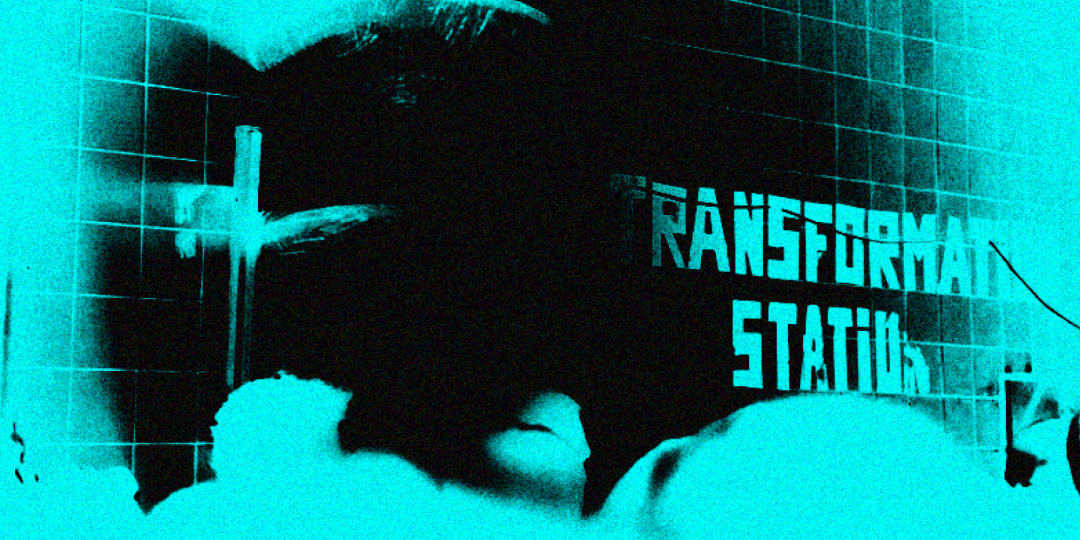
Back then I had no money, really. I was still a student, working in a record shop and maybe had enough to print some posters (which I was still putting up myself, armed with a bucket full of glue and a brush—finding the right spot is an art form, really), maybe enough to front some of the rider, but most certainly not enough to pay anything significant in advance. I made a compelling offer to Moby’s management: They wanted an authentic Berlin experience, and I was willing to give them that: an illegal rave, in a setting that he probably hadn’t seen since the ‘90s. I was transparent about the fact that no matter how much I would charge at the door, I would never be able to pay Moby anything close to what he’d usually get, and because the whole venture could be stopped by police at any point, we had to keep the risk as low as possible. I also had to pay other artists fairly. Against my expectations, they agreed. Moby would come and play for 2,000€ that would pay for his security and transport, which was pretty much all the money I had on my bank account. I wired it. There was no way back. Eight days to go.
The project started to escalate quickly. The line up grew to 16 artists (covering labels like Ostgut Ton, Hotflush, Numbers, Exploited, Leisure System, Planet Mu, and Greco-Roman), spread over three floors on top of four VJ collectives—somehow with a whole live painting performance and exhibition wedged in-between all of that as well. The thing was, however: Stattbad had virtually no permit for most of the events that they had been doing up until that point, so advertising it publicly would have put the whole project at risk. We couldn’t print posters, and we couldn’t put it on Facebook. We had to find other ways to get the word out. Seven days to go.
To sum it up: I had agreed to put on a rave that I wasn’t allowed to promote, in a venue that had no permit, with a line up and budget big enough that if I hadn’t come through, I would be broke and either chased out of town or hung in a cage at the middle of Alexanderplatz as a warning example, with less than a week to make it all happen. I obviously was way out of my league. I panicked. The only way to promote it was the most old-school way possible: word of mouth. Moby was playing an unannounced gig at a venue soon to be revealed, and anyone who wants the details would have to write to an anonymous email address: wefeelsoreal@gmail.com. I drafted an email with the info to some music blogs. I sent it out, I panicked some more. Five days to go.
To sum it up: I had agreed to put on a rave that I wasn’t allowed to promote, in a venue that had no permit, with a line up and budget big enough that if I hadn’t come through, I would be broke and either chased out of town or hung in a cage in Alexanderplatz.
Tuesday, the first blog wrote about it. I believe it was Ronny Kraak’s Kraftfuttermischwerk. Then another one. Emails started to come in. On Wednesday it hit the airwaves on pretty much every radio station in town—Motor FM, Flux FM, Fritz: Moby was playing for the first time in 25 years! No one knows where! Send an email to find out more. How cool is that! Thousands of emails were pouring in. I was a nervous wreck. Two more days.
The evening before the event, emails were still pouring in, over 18,000 and counting. We knew that by the time we revealed the venue all hell would break loose, and word would spread even further, probably attracting an even bigger crowd than we already expected. If anything, it would be too much of a success.
Friday, May 20th, 2011: Day of the event. While we were setting up, some very concerned-looking police officers entered the building. They had heard on the radio that Moby, the world-famous DJ, would be playing here, and they were wondering how that could be, as this wasn’t a music venue they were aware of. I’m not quite sure who came up with the answer—it was probably Jochen or Daniel—but someone managed to convince them that it was all a huge misunderstanding. Moby was merely holding a reading and playing records to a few selected guests, and the media had blown it out of proportion. We were prepared to send a lot of people away and would of course notify the local police station if we required assistance. Thank you very much for your concern, officers. They believed us and left. I don’t think I was able to panic any longer at that point.
The first people lined up four hours before the event. By the time we were ready to open the door, there were probably 2000. The next 10 hours went by in a blur. Over 4000 people showed up, and we somehow managed to get them all into the building, opening up additional sections just to have enough space for people to circulate. I have only blurry memories of the event itself. All I remember is DJ Maxximus playing his signature style of industrialized grime and dubstep, my friend Aida being very excited by electro pop sensation Body Bill, and overhearing a disappointed conversation between two guests questioning why Moby plays “such awful drum and bass music nowadays”—before they both realized it wasn’t Moby they were talking about. Right before Moby, I put my friend Jason Forrest on the line up, who plays a rather dadaist and hyperactive take on rave music with a healthy dose of breakcore, and who ran one of my favorite labels at that time, Cock Rock Disco. They had confused his bald head for Moby’s, but Jason’s was, at that time, probably double the size of the world’s most famous vegan.
Then Moby entered the building, chaperoned backstage through the basement by two suit-wearing bodyguards. I tried to have a conversation with him, but it was more or less impossible. I had never met any celebrities before that (and rarely have after), but it was like trying to talk to a TV with Moby’s image on it. It most certainly didn’t feel real. We took a photo.
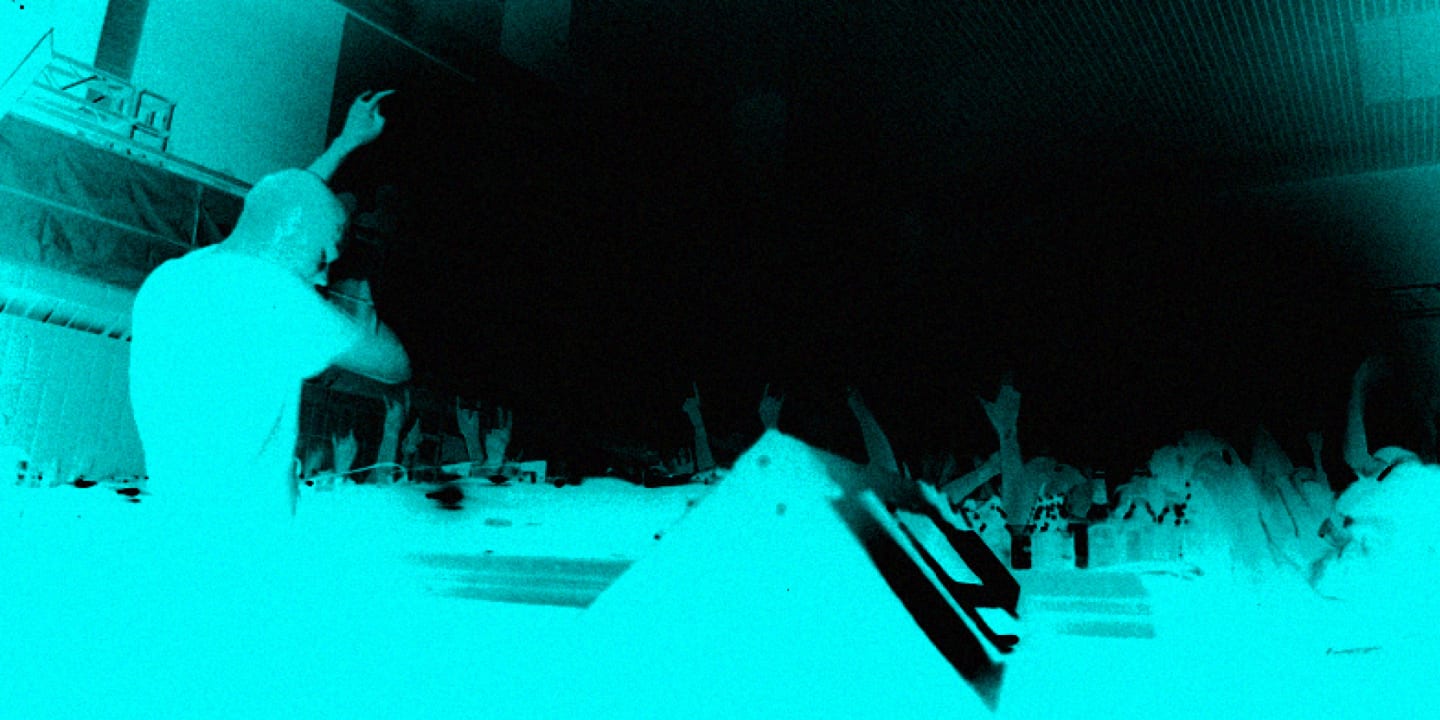
To understand the intensity of his set, you have to imagine the room he was playing in. Stattbad had turned one of the swimming pools into a dancefloor, with the DJ booth at the deep end and the dancefloor sloping up at an angle that made it just about possible to dance without slipping (as long as no one poured a drink on the floor, which inevitably happened minutes into the event). People stood all around the railings at the edges, looking down. It was both a sweaty pit and an arena that was unlike any other dancefloor in Berlin. Imagine the feeling of the stairs that connect Panorama Bar to Berghain, but extend that view around the whole dancefloor, with enough space for 1,200 people. It was incredible.
This element will show content from various video platforms.
If you load this Content, you accept cookies from external Media.
The track is called “Thousand” because it gradually builds up to 1000 BPM (1015 to be precise, making it the fastest single of all time according to the Guinness Book of World Records)...
His set was everything his fans wanted, probably. I don’t really remember. All I know is that by the time he was finishing his set (he played a generous 90 minutes instead of the 60 we had agreed on with his management, a sign that he probably enjoyed it), condensed sweat was raining off the ceiling, and he was standing on top of the CDJs, hands in the air, as the sound of his absolute finest production (the relatively unknown “Thousand”) hammered through the speakers. The track is called “Thousand” because it gradually builds up to 1000 BPM (1015 to be precise, making it the fastest single of all time according to the Guinness Book of World Records), in a threatening, overwhelming, and exhilarating speedcore staccato. I’ve seen countless DJs try to do the very same thing in the years after—including one that tried to pull that off that very same move inside the Berghain DJ booth at a CTM event… and fell over flying out of the booth—but that was the only time it ever made sense to me. That moment showed why, at some point in the early ‘90s, when he was touring the world, co-headlining with Aphex Twin and The Prodigy, he probably was one of rave music’s most promising artists.
The audience was ecstatic. I was panicking—not because the event wasn’t going well, the opposite rather. Surprisingly, the police had not showed up at any point despite the absolute madness inside the venue. No, I was feeling pretty bad for the poor sucker who had to DJ right after Moby had pulled off the worst kind of “1-2-fuck-you” handover any DJ could do to whoever was playing next: Me. I think by the time I got to the third track, there were less than 100 people left in the room. Moby didn’t say goodbye; he turned around and left with his tour manager and security details. I haven’t heard from him since, but his booking agent Jen wrote me a very nice email.
By the end of the night, I found myself standing by the door, with Stattbad’s Daniel and one of the artists who had played the event, Alex Waldron (A.K.A. Full Nelson). We were talking about how amazing the basement floor was and that it felt like it had the potential to become one of the most exciting and unique clubs in Berlin. At that moment it dawned on me that I had finally found the perfect space for another project I was working on at that time. A few months prior, I had begun talking to two guys in London named Thristian and Blaise, who had recently started a new type of video broadcast for underground music. It was called Boiler Room, and I planned to bring it to Berlin. I mentioned as much in the conversation with Alex, who looked at me puzzled, saying that he was also talking to Boiler Room about getting them to Berlin, and that he also thought about doing it in Stattbad’s basement. We ended up doing it together, but that is its own story, with even more incredible people and even more impossible spaces, all over the world.
This particular story ends here though, at about 7AM, with me leaving the building, smiling into the early summer sun, and a shoebox full of cash in my hands, knowing that I just had the time of my life.
Michail Stangl is a Russian-born curator and DJ, who has become an essential part of Berlin’s underground landscape over the past few years. With a focus on experimental sounds, he has been responsible for a wide range of events across the city, including his resident nights Bodywerk at Horst Krzbrg, and Leisure System and ≠ (not equal) at Berghain, as well as CTM Festival.
Published December 24, 2020. Words by Michail Stangl.










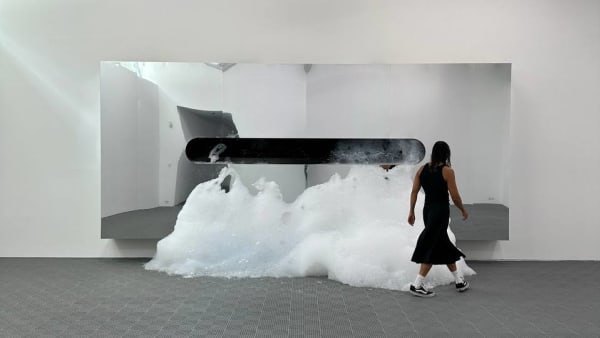






Follow @electronicbeats